The lush, dark green foliage of Texas ebony (
Ebenopsis ebano) is often the first characteristic people find attractive. While many trees native to the Southwest have varying shades of lighter greens with blue and gray undertones, the dark green leaves of this Texas native add a welcome splash of vibrant color to the landscape. Hardy to USDA Zone 7, it has thorny branches that remain evergreen throughout the year in zones 9 and above.
Like most plants from the Southwest, this slow-growing tree or large shrub can handle the heat and is extremely drought-tolerant once established. Small yellow puff-ball flowers appear in late spring through summer, followed by large seedpods.
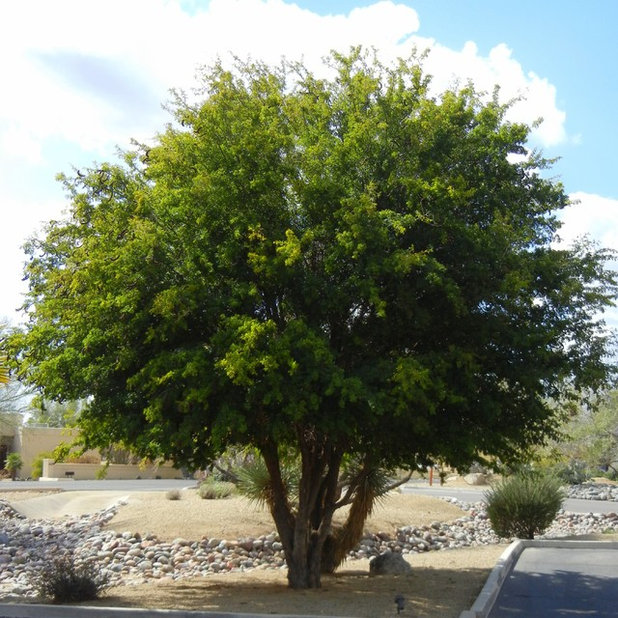
Noelle Johnson Landscape Consulting
Botanical name: Ebenopsis ebano (syn.
Pithecellobium flexicaule)
Common name: Texas ebony
Origin: Native to southern Texas and adjoining areas in Mexico
Where it will grow: Hardy to 10 degrees Fahrenheit (USDA Zone 7; find your zone); evergreen in zones 9 and above
Water requirement: Drought-tolerant once established, but does best when watered deeply twice a month in summer and monthly throughout the rest of the year
Light requirement: Full sun to filtered shade
Mature size: 15 to 40 feet tall and 15 to 30 feet wide
Benefits and tolerances: Drought-tolerant; attracts birds
Seasonal interest: Creamy yellow puff-ball flowers in late spring to summer, with large brown seedpods following
When to plant: Spring or fall
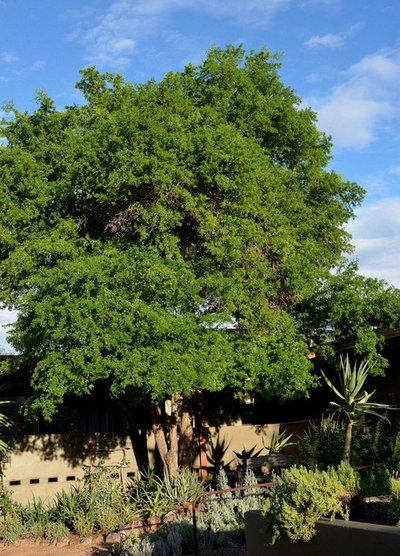
Noelle Johnson Landscape Consulting
Distinguishing traits. The leaves are made up of three to five pairs of glossy dark green leaflets that are ½ inch long. While the leaflets may be small, they form a lush, dense canopy that’s visually a welcome respite and also provides welcome shade in the Southwestern landscape. Birds are attracted to the dense canopy, where they find shelter and protection.
Texas ebony occurs naturally as a large shrub but is most often trained into a tree form for landscape use. However, some choose to grow it as a thick hedge.
Texas ebony’s growth rate is slow but can be increased by more frequent irrigation.
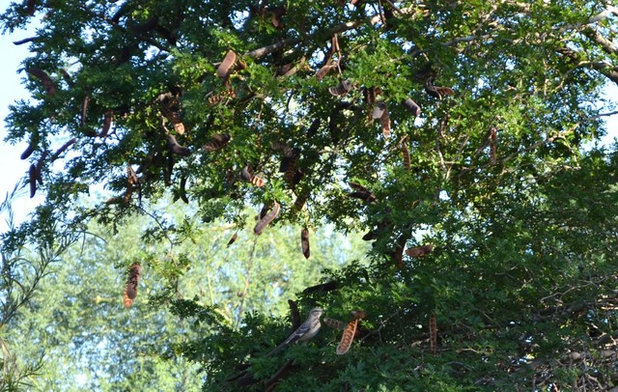
Noelle Johnson Landscape Consulting
The gray branches are covered in thorns and grow in a shrub-like pattern, with frequent twists and turns.
Creamy yellow flowers in the shape of small puff balls appear in late spring and last into summer; large brown seedpods show up a few weeks later. While the sight of seedpods may annoy some, others find them another ornamental feature of the tree, with their rich dark brown color contrasting the dark green foliage.
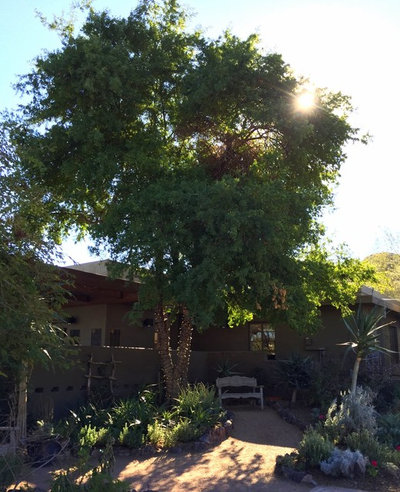
Noelle Johnson Landscape Consulting
How to use it. Texas ebony has two different uses in the landscape. As a large shrub, its dense, thorny branches can help create an almost impassable barrier as well as a dark green backdrop. When it’s used as a tree, its dense canopy can provide welcome shade to a courtyard, driveway or patio. Be sure to keep its branches pruned so that its thorns don’t inadvertently prick passersby.
Add plants that will enjoy the shade provided by this Texas native, such as aloe vera, whose gray-blue leaves will beautifully contrast the dark green foliage of Texas ebony. Mexican honeysuckle (
Justicia spicigera)
is a great choice for planting near trees, because it does well in both sun and shade. Autumn sage (
Salvia greggii), blackfoot daisy (
Melampodium leucanthum), gaura (
Gaura lindheimeri) and Mexican bush sage
(Salvia leucantha) also create an attractive planting with it.
Shown: A large Texas ebony at the Desert Botanical Garden in Phoenix
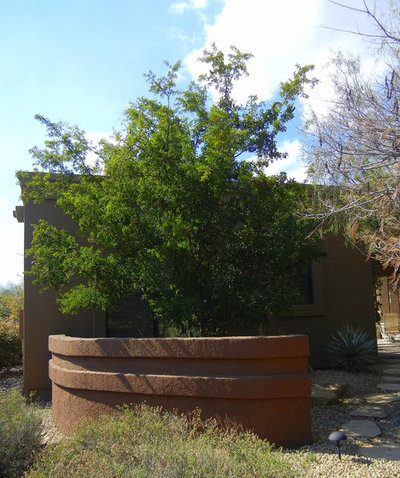
Noelle Johnson Landscape Consulting
This dark green beauty is also suitable for planting in medians, since it can thrive in hot, reflected heat. Because Texas ebony is a slow-growing tree, you may want to select a larger specimen for planting.
Shown: Texas Ebony used to provide privacy for a window
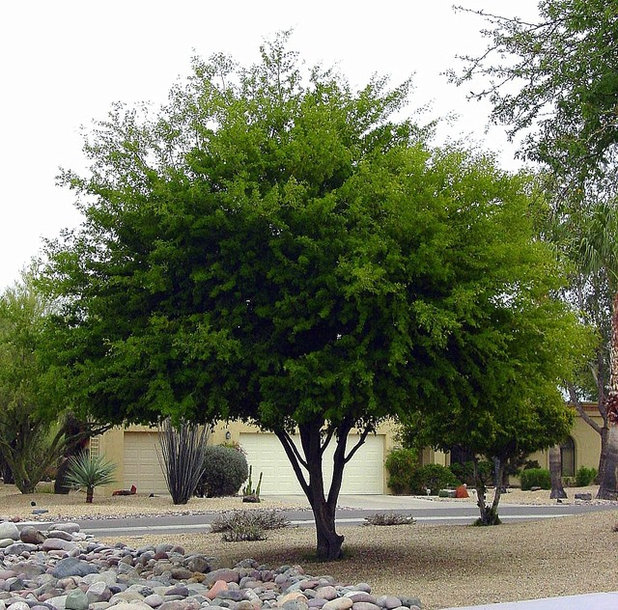
Noelle Johnson Landscape Consulting
Planting notes. Texas ebony isn’t picky about soil. However, as with most trees, the size of the hole is important. When planting, dig a hole three to four times wider than the root ball. This will allow the tree’s roots to become established more easily as they grow outward. The hole should be slightly shallower than the root ball. Water every three or four days for the first month. Afterward, water three or four times a month until a year has passed since it was planted.





